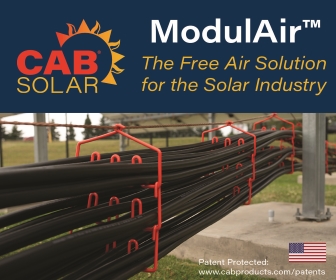PV Plant Safeguarding
PV Plant Safeguarding
Evolving from passive to proactive
The global photovoltaic (PV) industry has seen rapid development in recent years, and investments in PV plants are booming. Safety directly affects the return on investment (ROI), and as PV plants expand, PV plant owners face challenges to improve plant safety and diminish risks.
Based on insurance data, only 2% of accidents are due to fire, but fire damage accounts for 32% of accident compensation. Likewise, surge accidents account for 30% of compensation.
Safety and reliability are critical to PV plants, but if cost is a top consideration, safety may be compromised.
Often, fires are inverter-related, and problems usually involve noncompliance with national power grid requirements and lack of related standards between manufacturers. For example, the serial and parallel connection structures for equipment with a capacity of 35kV or lower, are non-standard, as is the supporting electrical equipment. The resulting complications can have a huge impact on PV plant owners, causing significant losses.
Technical experts agree most PV plant accidents stem from defective deployment solutions, as well as a lack of proactive protection. In mainstream string inverter-based smart PV plant solutions, large-scale ground PV plant projects must utilize proactive safeguarding because it has the following features:
- Shift from DC to AC, minimizing use of risky high-voltage DC systems;
- Fuse-less design;
- Proprietary PID technology to remove personal safety risks;
- Intelligent management system implementing string-level precise monitoring to identify risks early.
Shift from DC to AC
More than 80% of fire accidents in PV plants are caused by DC faults, and in a conventional PV plant (with central inverters), three high-voltage DC devices are used: DC combiner box, DC distribution cabinet, and the inverter. In a smart PV plant, the only DC device used is the inverter. This configuration shortens the transmission distance of DC power cables, and reduces the hidden hazards resulting from DC faults.
Arcing is a main cause of fire, and AC arcing can extinguish at the zero crossing point, but DC arcing will not extinguish until much later, giving it a higher risk. When a DC combiner box and DC power distribution cabinet are deployed in a conventional PV plant with central inverters, the DC electricity transmission distance is long. This involves a number of nodes and increases the probability of DC arcing.
An AC electricity system provides better short-circuit protection. Since an AC fault involves short-circuit energy from the power grid, the energy is sufficient to trip the circuit breaker.
Using fuses and circuit breakers on DC transmission lines can be risky, as they only provide passive protection. A smart PV plant is designed without a DC combiner box or distribution cabinet. DC power from PV strings is directed to the inverter, where the power is converted into AC power for long-distance transmission. This design avoids safety issues involved in DC transmission, and reduces the safety risks of DC arcing.
Fuse-less design
A 1MW PV plant with central inverters has 400 fuses with 1600 DC nodes and the boxes require reliable cable installation, which is not easy to obtain. Poor contacts can cause burning or DC arcing.
According to fuse failure rate statistics, the failure rate of fuses increases with service life, and exceeds 15% for fuses in service for more than five years. The high failure rate of fuses cause huge energy yield loss, making it harder to ensure PV plant safety.
A smart string PV inverter is connected to PV strings in parallel. If either string short-circuits, the back-feed current will not exceed 10A, and will not damage DC cables or PV modules. This fuse-less string design solution protects PV modules and cables at the source and avoids safety risks and loss incurred by fuse failures.
Proprietary PID technology removes personal safety risks
The PID effect results in severe power attenuation of PV modules. In a conventional PV plant, the input PV is connected to ground using a fuse to prevent the PID problem. A high voltage exists between PV+ and PE, and touching the positive terminal of a PV module can cause electric shock or death. A grounding fault may occur in the positive terminals of PV modules or cables between PV strings and arcing may be generated over the ground cable, which can cause a fire.
When a virtual positive voltage circuit is set in a string inverter-based smart PV plant, positive voltage to ground exists in the negative terminals of all PV modules. This prevents the PID effect. Intelligent residual current detection and circuit cutoff help prevent electric shocks and ensure personal safety.
Intelligent management system implementing string-level precise monitoring
The controller of a string inverter-based smart PV plant detects the voltage and current of each connected string with 10 times the accuracy of a conventional smart combiner box solution. The smart inverter works as a high-precision sensor implementing precise monitoring, identifying risks, and promptly reporting string-level monitoring information to the management system. This feature enables O&M personnel to rapidly locate faults without onsite inspection and simplifies communications by using 4G wireless technology.
Smart PV solutions do not require an inverter room, which means better environmental protection, higher construction safety, less construction workload, lower electromagnetic radiation, less equipment for maintenance, and fewer points of failure.
As the quota for PV plants increases and the construction cycle shortens, many PV plants are being built rapidly. Safety is vital during large-scale ground constructions. Conventional passive safeguarding cannot prevent PV plant accidents. Instead, proactive safeguarding should be practiced and reinforced. Evolving from passive safeguarding to proactive safeguarding will ensure the 25-year lifespan of PV plants.
Huawei FusionSolar | www.huawei.com
Volume: 2016 September/October









.png?r=6187)


